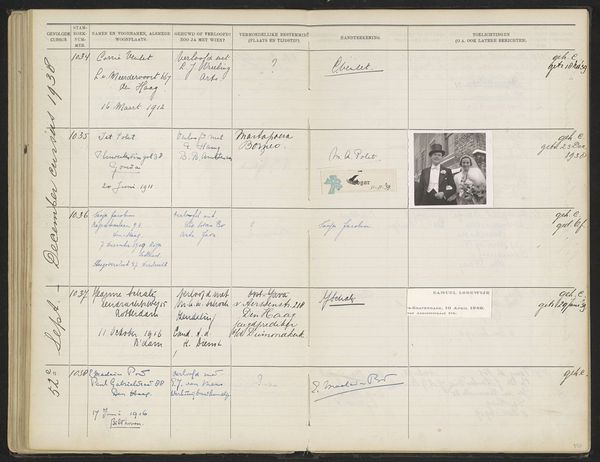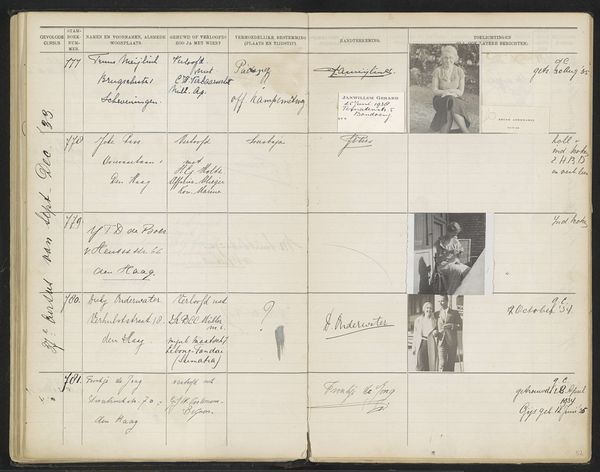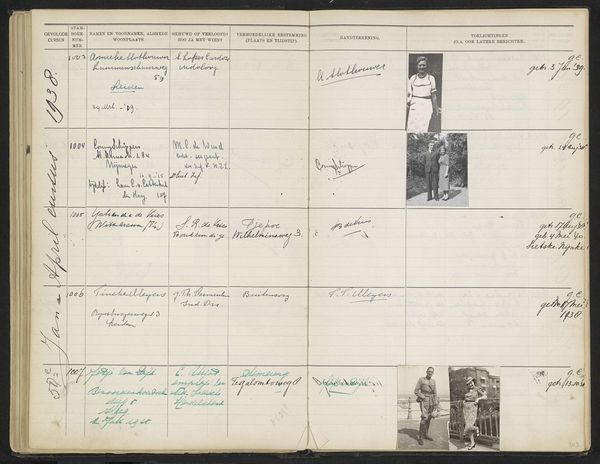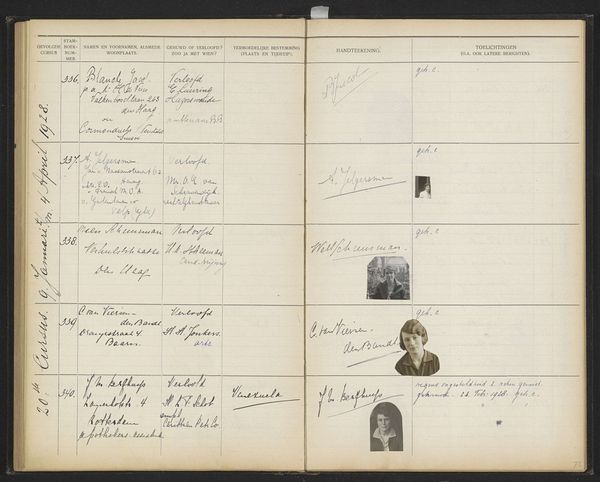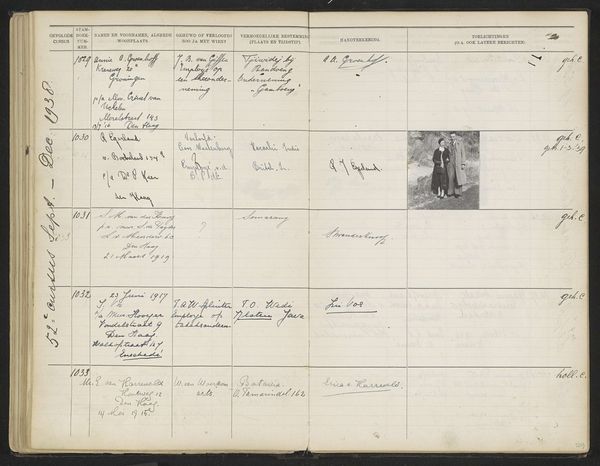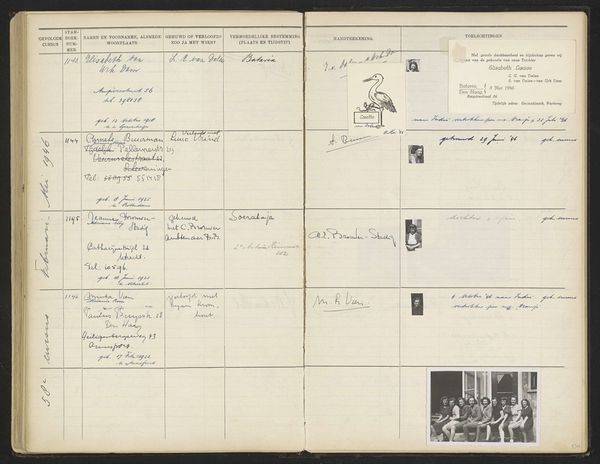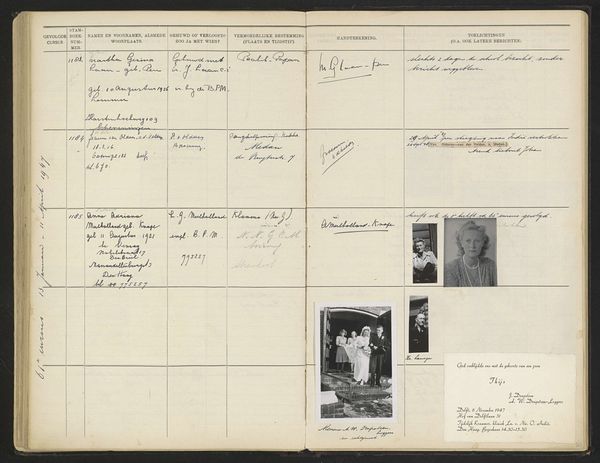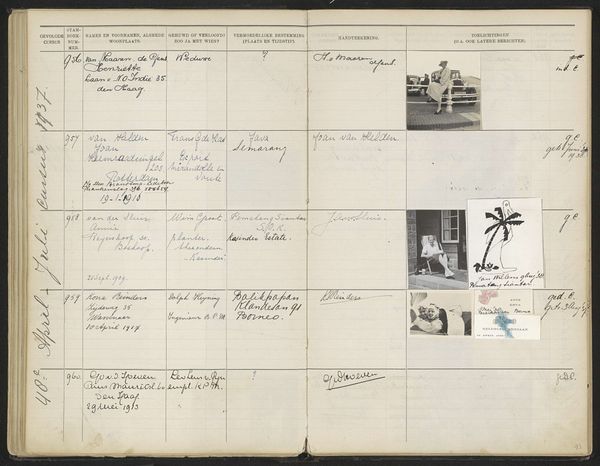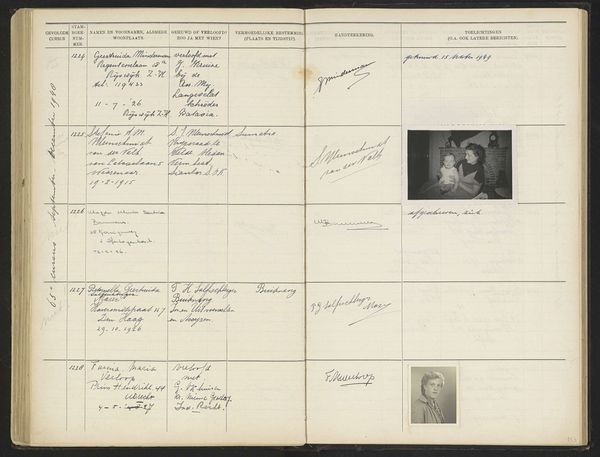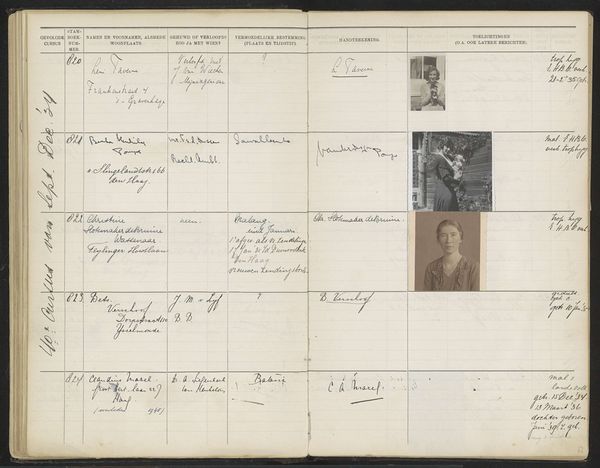
Blad 133 uit Stamboek van de leerlingen der Koloniale School voor Meisjes en Vrouwen te 's-Gravenhage deel II (1930-1949) Possibly 1946
0:00
0:00
drawing, paper
#
portrait
#
drawing
#
aged paper
#
hand-lettering
#
sketch book
#
hand drawn type
#
paper
#
personal sketchbook
#
hand-written
#
hand-drawn typeface
#
sketchbook drawing
#
handwritten font
#
sketchbook art
Dimensions: height 337 mm, width 435 mm
Copyright: Rijks Museum: Open Domain
Curator: Let's delve into "Blad 133 uit Stamboek van de leerlingen der Koloniale School voor Meisjes en Vrouwen te 's-Gravenhage deel II (1930-1949)", dating back to around 1946. This is a drawing on paper by an anonymous hand, resembling a page from a student registry or an archive record. Editor: My initial reaction is one of quiet curiosity. The faded paper and hand-lettering give it a palpable sense of history, almost melancholic. There are small portraits attached as well. Curator: Indeed. Consider the colonial context. These schools aimed to prepare young women for life in the colonies, solidifying Dutch power and influence. The meticulous record-keeping reflects the institutional machinery of colonialism. We see birthdates, addresses, parental information, and likely places of assignment after graduation. It’s an assemblage of administrative control. Editor: Absolutely. It’s the everyday nature of the record, though, that strikes me. This wasn't just about governing a territory, but also about the regulation and formatting of people’s lives. Did these women see themselves as active agents or cogs in this vast colonial project? Curator: The registry’s hand-written format reminds us that even bureaucratic structures rely on personal actions, each name and address filled by an individual who was, in essence, part of this project. It forces us to interrogate how these actions normalize institutional injustices through seemingly mundane acts. Editor: It certainly raises questions about agency and complicity within broader social structures. Even seemingly neutral processes can contribute to historical narratives of power and subjugation. This isn't merely a collection of data. Curator: This work’s format highlights an issue largely ignored: the crucial but unacknowledged role women played in sustaining colonialism and spreading influence across the colonies. Editor: Ultimately, this quiet, unassuming sketch evokes a deeper understanding of power, marginality, and human lives intertwined within complex social forces.
Comments
No comments
Be the first to comment and join the conversation on the ultimate creative platform.
